new posts in all blogs
Viewing Blog: LitLinx, Most Recent at Top
Results 1 - 25 of 176
"Linking life to literature and literature to life."
Statistics for LitLinx
Number of Readers that added this blog to their MyJacketFlap: 2
|
| My first meeting of M. Lisa. |
|
It's a Paris themed summer. Driving between Virginia and Vermont, I listened on CD to R. A. Scotti's
Vanished Smile: The Mysterious Theft of the Mona Lisa. Okay. True confession. I didn't know that the Mona Lisa had once been stolen! I tell you, if this tidbit had been included in high school history classes, I would have engaged.
Mary Jo Murphy's New York Times review of the book is itself a literary work of art. She begins: "Four hundred years before Picasso reassembled women with eyeballs where breasts should be and noses poking out of ears, Leonardo da Vinci put a smile on a woman’s face — right where nature intended and yet unlike any smile before it or since. It was Mona Lisa’s, and on the morning of Aug. 22, 1911, it wasn’t there."
Scotti's well researched account of the crime and its abundant suspects is a history lesson of the Western art world of the early 20th century. We're also introduced to the development of forensic science, the history of the
Louvre, and the biography of Mona Lisa -- the painting the French call La Joconde. Since the reader makes or breaks an audio book, I'm happy to say that
Kathe Mazur does a good job.
I read
Vanished Smile after I'd seen Woody Allen's Cannes applauded
Midnight in Paris. The book provides historical details which compliment the film. They're a great match for a Paris themed summer.
For more on Paris:Keeping a Personal PromiseMysteries in Paris Almost FrenchThe Sweet Life in ParisWhat Should I See in Paris?The List of 35First Day in Paris!Paris Jour Deux Joyce, Hemmingway and Ujka LarsonAn American (Library) in Paris My Birthday in ParisJ'aime Paris!My Last Night in Paris
A few winters ago driving through Massachusetts to Vermont, I looked to my right while at a traffic light and made a surprising discovery. There was the sign for
Edith Wharton's home, The Mount. I'd read a few of Wharton's books, and loved them. I had no idea she'd had an estate in Massachusetts. I couldn't visit then because it was closed for the season.
When I returned home, I Googled "The Mount." I was shocked to learn that the estate was threatened with bankruptcy, and I a wrote a blog post about how to
help save it. Fortunately, gifts have enabled the historic site to remain open. At least for now.
Returning from Vermont this week, I made my long awaited visit to The Mount. Needless to say, I was thrilled to walk in a favorite author's footsteps and imagine her living there, and awed by the beauty of the home and gardens she designed. In the coming days, I'll take you on a virtual tour with my words and pictures.
Read More At: Save The MountFirst Woman to Win Pulitzer
The Kellogg-Hubbard Library in Montpelier, Vermont, was dedicated on January 2, 1896. The Classical Revival style building is built of light-colored granite from Dummerston, Vermont. The library is named for Martin M. Kellogg, a New York real estate baron who was born in Barre, Vermont, and his wife Fanny M. Hubbard Kellogg, a Montpelier native. The couple willed their money to build the library. Fanny's nephew John E. Hubbard at first contested the will, but in the end contributed $30,000 more toward the library than the will provided. The Kellogg-Hubbard Library continues as a vibrant center in Montpelier.
 |
| Early morning from my east facing window. |
The crow calling just outside my window woke me enough to notice how light it was. Must be a least 7. No, only 5:18 a.m. Too early to be up with a long day ahead of me. But as I lay in the guest bed, the quiet energized me.
I'm staying on top a mountain near East Calais, Vermont, and the beauty of sound and sight and fragrance is balm to my soul. There is no hum of the highway half a mile away; no jarring sirens of emergency vehicles responding to the needs of the one million people living in a single county; no ridiculously heavy footsteps of the family in the apartment above me. Instead, I listen to the calls of birds I can identify (killdeer, crow, robin, some kind of owl) and the songs of those I don't yet know. This quiet is like a drink of cool water on a warm day.
 |
| Early morning from my north facing window. |
I am inspired to write, energized to do so now. Being in Vermont, I can't help but think of poet Robert Frost. He worked the land, knew the people, and recorded them in verse that grasps their vitality and reality. I feel a kinship to him in shared loves. I am writing in Vermont.
 |
| The window seat of the "perfect present." |
Living in the moment is vital. Not one of us has any certainty beyond the present. Yet I find myself thinking of the future. When I move to Vermont, then I will be happy, When I publish a book, then I will be successful. When I make a lot of money, then I will feel secure. Rarely do I find satisfaction in the moment. That is why last night was so incredible. I am in Vermont because my daughter is in the hospital here. It is a stress filled time of uncertainties and decisions. The kindness of strangers has provided me a place to stay, and last night I experienced, in the midst of a life storm, perfection in the moment. I sat in a window seat watching a thunder storm transverse the mountains as I read a book about a romance in Paris, eating chocolate, sipping red wine, and patting a purring cat. The moment was perfect, and I was there in it.
What a fun book this is.
Creaky Old House: A Topsy-Turvey Tale of a Real Fixer-Upper by Linda Ashman is a rhyming adventure of a simple home-repair taking on bigger and bigger proportions.
"Our house is kind of old and creaky.
Porch is sloping, roof is leaky.
Windows drafty, shutters peeling.
There's a crack across the ceiling.
Paint's a little chipped and faded.
Might say it's dilapidated.
Still, each one of us -- all nine --
thinks the house is fine, just fine."
The family of nine thinks their house is just fine until a doorknob falls to the floor. They look in the shed for one screw, and that begins a chain of events gone wild. Michael Chesworth's ink, watercolor and pencil pictures, reminiscent of Richard Scarry's style, provide a smorgasbord of comical images to illustrate the text.
The American Flag is considered the oldest symbol of the United States. In 1949, President Harry S. Truman declared June 14 as Flag Day. It was the day in 1777 on which the Continental Congress designated the making of the first American flag.
Britain’s Union Jack had flown over the colonies in America since 1607. But in 1775, in a show of unity, the colonists designed the Grand Union flag. It had 13 stripes to represent the 13 colonies, and a small Union Jack in the upper right hand corner to represent loyalty to Britain. The Grand Union flag was also called the Continental Colors or Congress flag. Ralph Waldo Emerson mentioned the flag in his
Concord Hymn, a poetic commemoration of the first battle of the American Revolution, which took place on April 19, 1775, at the North Bridge in Concord, Massachusetts.
“By the rude bridge that arched the flood,
Their flag to April’s breeze unfurled,
Here once the embattled farmers stood,
And fired the shot heard round the world ….”
On July 4, 1776, the colonies adopted the Declaration of Independence, and almost a year later, on June 14, 1777, the Continental Congress passed a resolution stating, “Resolved, That the Flag of the United States be 13 stripes alternate red and white, that the Union be 13 stars white in a blue field representing a new constellation.” That new constellation was the new county.
The first American flag may have been designed by congressman Francis Hopkinson, or by a committee. Although historical evidence proves that Betsy Ross sewed American flags, it is not certain that she made the first one.
While Francis Scott Key watched the fighting in Baltimore Harbor during the War of 1812, he noticed that once the bombing stopped, the American Flag was still flying. He wrote
The Star-Spangled Banner, which in 1931 Congress named the national anthem. The very flag that inspired Francis Scott Key is on display at the Smithsonian’s National Museum of American History in D.C.
In 1831 a Massachusetts sea captain named William Driver nicknamed the American flag “Old Glory.”
As the country grew, Congress decided that after a state was admitted into the Union, a new star representing that state would be added to the flag on the Fourth of July. Since 1777, the flag has changed 26 times. The current 50-star flag has flown since 1960.
For more information about Flag Day and the American flag, consider these children's books:
What’s So Great About … Frances Scott Key? by Marylou Morano Kjelle
The American Flag by Christine Poolos
Meet Our Flag, Old Glory by April Jones Prince
Special occasions provide reading opportunities. Choosing books related to a holiday teaches children about the event, and adds to the festivities and memories. Try these picture books for Fathers' Day read alongs.
Daddy's Lullaby by Tony Bradman
I Love Daddy by Lizi Boyd
My Daddy's Job by Peter Glassman
Father's Rubber Shoes by Yumi Heo
Daddy Hugs 1*2*3 by Karen Katz
Daddies Give You Horsey Rides by Abby Levine
Father Bear's Special Day by Else Holmelund Minarik
A Father's Day Thank You by Janet Nolan
Father's Day by Anne Rockwell
Daddy All Day Long by Francesca Rusackas
When Papa Comes Home Tonight by Eileen Spinelli
My Daddy and Me by Jerry Spinelli
Driving Daddy by Hope Vestergaard
Every Friday by Dan Yaccarino
Do you have others to recommend?
My youngest daughter, now heading to high school, recalled for me her favorite books. Here are her recommendations for readers in fifth grade.
A Mango-Shaped Space by Wendy Mass The True Confessions of Charlotte Doyle by Avi
Peter and the Starcatchers series by Dave Barry
- Peter and the Starcatchers
- Peter and the Shadow Thieves
- Peter and the Secret of Rundoon
- Peter and the Sword of Mercy
The Penderwicks and
The Penderwicks on Gardam Street by Jeanne Birdsall
A Face First by Priscilla Cummings
Marley, A Dog Like No Other by John Grogan
Edward's Eyes by Patricia MacLachlan
How to Steal a Dog by Barbara O'Connor
Island of the Blue Dolphins by Scott O'Dell
The Invention of Hugo Cabret by Brian Selznick
The Story of a Seagull and the Cat who Taught Her to Fly by Luis Sepulveda
Elsewhere by Gabrielle Zevin
Sandra's Recommendations for Fourth Grade ReadersSandra's Recommendations for Third Grade Readers
I was fairly new to Twitter when I noticed a message from @thebookmaven (a.k.a.
Bethanne Patrick) inviting me to share what I was reading, with the hashtag #FridayReads. I loved Bethanne's cheerleading and hourly, if not more frequent, count of how many people had participated. I shared.
Now I greet every Friday with TGI #FridayReads on my Twitter account. I look forward to sharing what I'm reading, to seeing the count of how many have shared, and to the sometimes clever, sometimes simple reminders to participate.
FridayReads has expanded from Twitter (
@fridayreads) to
Facebook and
Blogspot, too. The FridayReads blog includes lists of the top titles being read (or listened to) worldwide each week, and synopses of the books which the FridayReads team members* are currently reading. I've referred to both for ideas of what to read next. But still my favorite is participating on Twitter.
#FridayReads has become my book group. I enjoy sharing my reading, greeting other FridayReaders on Twitter each week, and spreading the word. I think you'd enjoy participating, too.
*The FridayReads Team
@thebookmaven (
Bethanne Patrick)
@erinfaye (Erin Mitchell,
In Real Life)
@bookmeme (Ian Lewis,
Book Meme)
@bookladysblog (Rebecca Schinsky,
The Book Lady's Blog)
@shelfmagazine (
Shelf Unbound)
Katie Shea works for the Caren Johnson Literary Agency in New York City. It was a tweet that led me to her blog interview with Chuck Sambuchino, editor of Guide to Literary Agents.
As Shea works to build her own client list, she is especially interested in literary fiction. I hadn't heard that term before. Sambuchino defined it as, "'important' works with beautiful writing and envelope-pushing or groundbreaking subjects." He asked Shea to elaborate, and I loved her description:
"Literary fiction involves serious and personal themes, while creating a beautifully written story. First off, I want something I can connect to. I am most interested in stories about family dynamics, motherhood, fatherhood, personal overcome, unexpected relationships, and self-discovery. I truly look for a story that has it all—love, hate, good, bad, tears, laughter, success, failure—showing me that the writer can connect with a vast audience on many levels.
"The tone of the book is also extremely interesting to me. The main character must always set the mood of the story. I like sadness and darkness, but I also like to see positivity and happiness somewhere in the plot. I want to feel the story in my veins."
Friends have suggested that instead of a memoir, I write a fiction book based on fact. It sounds to me that my book should be literary fiction. It's another step toward finishing the project.
Shea said four of her favorite literary fiction titles are:

by Michael Cunningham
Little Bee by Chris Cleave
The Help by Kathryn Stockett
Water for Elephants by Sara Gruen
Which of these do you like?
These are my daughter's recommended reads for kids in fourth grade. They were her favorites when she was that age. They're real life fiction, historical fiction and fantasy.
The Birchbark House by Louise Erdrich
Blood on the River: James Town 1607 by Elisa Carbone
Each Little Bird that Sings by Deborah Wiles
The Golden Compass by Philip Pullman
Harry Potter books 1 - 3 by J. K. Rowling
Harry Potter and the Sorcerer's StoneHarry Potter and the Chamber of SecretsHarry Potter and the Prisoner of AzkabanJulie of the Wolves by Jean Craighead George
Midnight Rider by Joan Hiatt Harlow
My Side of the Mountain by Jean Craighead George
Warriors: The New Prophecy series by Erin Hunter
MidnightMoonriseDawnStarlightTwilightSunsetSee also
Sandra's Recommendations for Third Grade Readers.
My fourteen-year-old is an enthusiastic reader. Recently while waiting for me to finish my shift at the public library, she was browsing the shelves and reminiscing about the books she’s read. So I asked her to make me a list of her favorites; books she’d recommend to readers in different grades. This is the first installment of that project.
How to Train Your Dragon by Cressida Cowell
Frindle by Andrew Clements
 Ramona series by Beverly Cleary
Ramona series by Beverly Cleary
Beezus and Ramona
Ramona the Pest
Ramona the Brave
Ramona and Her Father
Ramona and Her Mother
Ramona Quimby, Age 8
Ramona Forever
Ramona's World
The BFG by Roald Dahl
Warriors series by Erin Hunter
Into the Wild
Fire and Ice
Forest of Secrets
Rising Storm
A Dangerous PathEmily Windsnap series by Liz Kessler
The Tail of Emily Windsnap
Emily Windsnap and the Monster from the Deep
Emily Windsnap and the Castle in the Mist
Emily Windsnap and the Sirens Secret
The Trumpet of the Swan by E. B. White
The Little House series by Laura Ingalls Wilder
Little House in the Big WoodsLittle House on the PrairieFarmer BoyOn the Banks of Plum CreekBy the Shores of Silver LakeThe Long WinterLittle Town on the PrairieThese Happy Golden YearsThe First Four Years
May is
Asian Pacific American Heritage Month, one of five federally mandated heritage months recognized by The Library of Congress, National Archives and Records Administration, National Endowment for the Humanities, National Gallery of Art, National Park Service, Smithsonian Institution and United States Holocaust Memorial Museum. According to the
Smithsonian Education website, heritage months are held to "pay tribute to the generations who have enriched America’s history and are instrumental in its future success."
The other four heritage months are Black History Month (February); Women's History Month (March); Hispanic Heritage Month (Sept. 15 - Oct. 15); and American Indian Heritage Month (November).
Related Posts:
A Pair of Red ClogsKids Titles for Asian Pacific Heritage MonthAsian Pacific American Heritage Month The Beckoning Cat
A few years ago, National Geographic photographer Joel Sartore honored mothers on CBS Sunday Morning, sharing that he never gave much thought to Mother's Day -- beyond ordering flowers -- until he heard a mother singing a lullaby to her child. The lullaby turned out to be Baby Mine, written in 1878 by (I believe) Italian-born trumpet player Mike Mosiello. The song was recorded on the Van Dyke label (81878).
"Baby mine, don't you cry.
Baby mine, dry your eyes.
Rest your head close to my heart,
Never to part, baby of mine."
I am reminded of the song Somewhere Out There, written by James Horner, Barry Mann and Cynthia Weil. It was the theme of the 1987 movie An American Tail.
When I lost full time care of my three children through a divorce custody battle, my heart was shattered. At night when they weren't with me, I'd miss tucking them in and kissing them goodnight. This song played in my mind, and it became for me a lullaby and a prayer for my children across the divide of time and space.
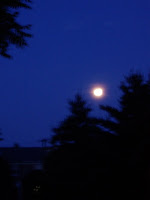
Sartore's tribute to mothers included photographs and a recording of his wife Kathy singing
Baby Mine to their son. Sartore said that he now understands that, "There is no greater bond than between a mother and her child." I thank Sartore for reminding the world of this truth. It is my Mother's Day gift.
Earlier this week I received via email a link to Andrew McAfee’s Harvard Business Review blog post Tune Out, Turn Off: A Mantra Needed for Our Times?
The gist of the blog is that social media can be the enemy of deep thinking. True. But it can also be a conduit to deep thinking. Here’s my example.
A tweet offering a free issue of
World Literature Today, a publication I’d never heard of, caught my attention. I requested a copy. The cover story of the issue I received (July/August 2010) is on Sherman Alexie, “named one of the New Yorker’s twenty top writers for the twenty-first century” (page 35).
I’d read Alexie’s young adult novel
The Absolutely True Diary of a Part-Time Indian, but I had no idea that he is such a prolific and well-known writer – until I read the article.
Because of the article, I checked-out his collection of poems and short stories entitled
War Dances. It won the 2010 PEN / Faulkner Award for Fiction. In addition to laughing out loud and otherwise enjoying the book, Alexie also inspired deep thinking.
“Back in college, when I was first learning how to edit film – how to construct a scene – my professor, Mr. Baron, said to me, ‘You don’t have to show people using a door to walk into a room. If people are already in the room, the audience will understand that they didn’t crawl through a window or drop from the ceiling or just materialize. The audience understands that a door has been used – the eyes and mind will make the connection – so you can just skip the door.’”
“’Skip the door’ is a good piece of advice – a maxim, if you will – that I’ve applied to my entire editorial career, if not my entire life. To state it in less poetic terms, one would say, ‘An editor must omit all unnecessary information’” (page 5, from the story
Breaking and Entering.)
Now for some of you this may seem like elementary advice. But for me, it inspired deep thinking about writing in general and my writing specifically.
There is a risk with social media’s constant stream of information to skim the surface and jump to the next thing. As McAfee writes, “This is potent, addictive stuff, and as Nick points out it does not lend itself to deep thinking and sustained concentration.”
But if we use social media to provide ideas, and then take time to pursue the ideas -- even unplug to think -- then social media can be a conduit to deep thinking. It is for me.
Over the past three years, staff and material budgets for local libraries in the United States have been decimated by the government entities that fund them. Yet a study by the American Library Association and the Gates Foundation found that over the past year, "Americans are making use of their libraries at steady or increasing rates" (The State of America's Libraries: A Report from the American Library Association). Can public libraries keep up with the demand for services and resources without the money to fund them? I'm beginning to doubt it.
Internet stations in my local public library are installed with Microsoft Office 2003. More and more customers are coming to the library with flash drives and documents more advanced than the library computers are able to handle. There is no money for computer upgrades. At what point will the library's infrastructure become obsolete?
“Computer and Internet access at public libraries connect millions of Americans to economic, educational, and social opportunity each year, but libraries struggle to replace aging computer workstations and provide the high-speed Internet connections patrons need,” said Jill Nishi, deputy director of U.S. Libraries at the Bill & Melinda Gates Foundation. “As demand for these services rise, public and private investment to support public access technology at libraries is more critical than ever.” (From The State of America's Libraries.)
Where will this public and private investment come from? We hear that the economy is improving, but as gas prices and rents are on the rise, salaries are not. Neither are library budgets. Even print materials are becoming outdated. For example, the most recent edition of a book on blogging that I found in my library system was published in 2006. I discovered that many of the links referenced in the book are now obsolete. If public libraries aren't funded at a level that enables them to keep their resources current, will they ever be able to catch up? What do you think?
In honor of National Poetry Month, I hosted a poetry workshop entitled Poems to Pictures. Author and poet Ruth Baja Williams read the poems she'd set to a series of watercolors by artist Jane Andrle Gillette, photos of which we're projected for viewing. Workshop participants then chose from a selection of magazine and postcard pictures set out on a table, and crafted their own poem to picture. The results were stunning. In just 30 minutes, drafts were completed, read aloud, and appreciated. My favorite is Remember the Lake, by George Mason University creative writing student Benjamin Renne. He chose a magazine photo of Morning, Lake George, an 1871 oil on canvas by A T Bricher.
 |
| Morning, Lake George. Oil on canvas by A T Bricher 1871 |
Remember the LakeBy Benjamin Renne
Remember the lake
That swollen Autumn morning
When you and me and Jack went
Out for a row. We brought
The tackle box and the rods and
A paper bag full of fried egg sandwiches.
Remember the rocks
In the middle of the silent
Pond, frost covered and slick. They
Were the giants and the sirens,
Enticing fantasies and chimeras which
Even brave Ulysses can’t avoid.
Remember the shoreline,
How it seemed so far away
When we were alone, the three
Of us in the middle of the peaceful lake.
The pebble beach, littered with goose
Shit, was far away. So far.
Remember the trees,
Bare of life and slanted
Like an old man with a broken
Back. The birds, which used to
Call those dead trees home, would
Sing to us on that frosty morning.
Remember the sky
And the mountains gray,
Fading into the background, where the
Fog blends everything together
So that the future is masked
With the low clouds, fuzzy and unpredictable.
Remember the car,
The smell of fish
Which permeated the leather seats,
And Jack complained the whole way back.
My boots were wet and stunk still
Of the lake, but I smiled.
Remember the lake?
Other posts on poetry:April is National Poetry MonthFranz Schubert and Friedrich Rückert: Poetry and MusicLate WifeWhen Writing a PoemMLB, Opening Day
Kids love series. If you think about it, so do adults. Whether in books or broadcast, series provide us characters we’ve come to know. We want to see what they’ll do next.
One of the most asked for series by boys currently coming to me in the library is
Diary of a Wimpy Kid by Jeff Kinney. The series began in 2004 as daily posts on
Funbrain.com. The first in book format,
Diary of a Wimpy Kid, was published in April 2007.
Diary of a Wimpy Kid: Roderick Rules followed in February 2008;
The Last Straw in January 2009;
Dog Days in October 2009; and
The Ugly Truth in November 2010.
According to Kinney’s
Diary of a Wimpy Kid Website, the first three books were based on the Internet version but, “The print version of the books have improved stories, better drawings, and new surprises for those who have already read the online version.”
Series draw kids from book to book. But as one father said to me, “the challenge comes when the series ends. What do we read next?” Guiding kids to the next series when one is finished, or to a similar series while waiting for one with many holds, is a challenge for librarians, too. To help, I’ve produced my own list -- "If You Like Diary of a Wimpy Kid You Might Also Like …” It includes the series title, series author, and number of books currently in the series. A librarian or book seller can help you identify each individual title in the series. Or, you may want to visit
Mid-Continent Public Library’s database of Juvenile Series and Sequels.
Andrew Lost by J. C. Greenburg (36 books)
Andrew and his friends encounter unusual adventures while exploring science.
Captain Underpants by Dav Pilky (10 books)
A school principal transforms into superhero Captain Underpants.
Franny K. Stein, Mad Scientist by Jim Benton (7 books)
Franny K. Stein’s experiments are meant to improve life at school, but that’s not exactly how it goes.
Lawn Boy by Gary Paulsen (2 books)
A 12-year-old inherits his Grandpa’s riding lawnmower and turns a big business.
Melvin Beederman, Superhero by Greg Trine (8 books)
Crime in Los Angeles has met its match with Melvin Beederman, superhero and snack food lover.
My Weird School by Dan Gutman (21 books)
At Ella Mentry School, the adults are a little weird.
Ricky Ricotta's Mighty Robot by Dav Pilky (6 books)
Ricky is a little mouse with a big Robot, and their adventures span the universe.
Rotten School by R. L. Stine (16 books)
Bernie Bridges always looks for inventive ways to rule at his boarding school.
Shredderman by Wendelin Van Draanen (4 books)
Nolan hides behind his Shredderman identity to fight for justice.
Time Warp Trio by Jon Scieszka (16 books)
Joe, Fred, and Samantha time-travel throughout history.
Wiley & Grampa’s Creature Features by Kirk Scroggs (10 books)
Wiley and his Grampa face monster tornadoes, vampire trucks, and other horrors.
The Zack Files by Dan Greenburg (30 books)
Zack, his father, and Spencer share zany adventures.
This is not an exhaustive list, and it’s not meant only for boys. Anyone who likes the fun of
Diary of a Wimpy Kid might like these, too. Do you have suggestions for others to ad
Who am I to disagree with
The Horn Book Magazine! But I do. The reverenced publication of children and teen literature reviews disses Alison Inches picture book
I Can Save the Ocean! The Little Green Monster Cleans up the Beach (2010 by Little Simon). The July 1, 2010, review says, "
The cartoony illustrations of Max are mildly amusing, but the story is bland and the eco-friendly message is ham-fistedly delivered."
I say rubbish! When Max the little green monster realizes that his habits are contributing to the pollution of the oceans, he determines to change his ways and educate his friends, too. The book presents kids with things they can do to contribute to the care of our environment, and encourages personal responsibility for ones actions. I fail to see any "ham-fisted" delivery or bland story line. And I believe the colorful illustrations are kid friendly. I recommend this book for all library collections -- school, home and private.
 |
| Photo by Susan Ujka Larson |
It's
Poem in Your Pocket Day, sponsored by
The Academy of American Poets as part of
National Poetry Month. Since it is a beautiful day here in the D.C. area, I've chosen
Today by
Billy Collins as the poem I will carry with me to share.
TodayIf ever there were a spring day so perfect,
so uplifted by a warm intermittent breeze
that it made you want to throw
open all the windows in the house
and unlatch the door to the canary's cage,
indeed, rip the little door from its jamb,
a day when the cool brick paths
and the garden bursting with peonies
seemed so etched in sunlight
that you felt like taking
a hammer to the glass paperweight
on the living room end table,
releasing the inhabitants
from their snow-covered cottage
so they could walk out,
holding hands and squinting
into this larger dome of blue and white,
well, today is just that kind of day."
By:
Susan Ujka Larson,
on 4/11/2011
Blog:
LitLinx
(
Login to Add to MyJacketFlap)
JacketFlap tags:
2011,
National Library Week,
Anna McQuinn,
Lola Loves Stories,
Miss Brooks Loves Books,
Kevin Hawkes,
Library Lion,
Rosalind Beardshaw,
Barbara Bottner,
Michael Emberley,
Michelle Knudsen,
Add a tag
With clever humor, Barbara Bottner introduces Miss Brooks and the first grader who is rather bothered by this school librarian's book fervor. "I think Miss Brooks gets a little too excited," she says in
Miss Brooks Loves Books! (and I don't). She finds the librarian's enthusiasm so "vexing" that when she gets home, "I ask my mother if we can move to a new town. My mother says there's a librarian in every town." In the end, this stubborn student learns that there are books for even the most discriminating reader. The illustrations by Michael Emberley add to the fun of the story. The book was published in the U.S. in 2010.
It's
National Library Week, and each year I like to share a few picture book titles having to do with libraries and librarians. In addition to
Miss Brooks Loves Books! (and I don't), here are two others to enjoy.
Library Lion by Michelle Knudsen, illustrated by Kevin Hawkes.
When a lion entered the library, no one knew what to do because, "There weren't any rules about lions in the library." Miss Merriweather, the librarian, decides that the lion can stay if he is quiet. The lion comes daily to volunteer and attend story time. But one day when the lion can't be quiet, because he has a very good reason to roar, he is scolded for breaking the rules. He leaves the library, disgraced, and doesn't return until . . . .
Library Lion is a wonderfully written and illustrated picture book published in 2006.
Lola Loves Stories by Anna McQuinn, illustrated by Rosalind Beardshaw.
Every Saturday Lola and her daddy go to the library and choose books to read throughout the next week. The books she picks influence her play. Lola might be a fairy princess, or a tiger, or pilot. The simple text and bright pictures of this picture book, published in 2010, will appeal to younger readers.
Thursday on twitter, January O'Neil (@januaryoneil) shared that she'd posted three new poems on her blog Poet Mom, in response to National Poetry Writing Month (#NaPoWriMo). NaPoWriMo challenges poets to write a poem a day during April, National Poetry Month.
Of O'Neil's three poems, I loved Loser. As I read, I could picture it all, and relate.
"I whisper it under by breath like a little prayer
as we pass through the front door,
you going in, me coming out,
crowding the threshold
in a weird game of chicken.
We both have right of way
but neither is willing to yield.
A heart-skipped beat. A bottled misery.
The word ripples from the underground
spring of the diaphragm where a fissure
has opened once again, the trauma
of old love that never heals.
I brace myself for unavoidable contact,
avert the eyes, move through the stiff air
like a cloud wedged between clouds.
Say it, that mantra of the highest order.
I hold my breath as your windbreaker
brushes against my three-quarter length,
my 100 wool against your polyester blend.
What more is there to do but go through?
L for loser, double L for lost love.
The Motels had it right,
“Take the L out of lover and it’s over,”
because the body gives up what it no longer needs.
This is how I walk through without looking back."
This poem reminded me of another poet. Claudia Emerson won The Pulitzer Prize for Poetry in 2006 for her collection titled late wife. I agree with another poet's praise of the collection. Henry Taylor says of late wife, "They [the poems] are deeply absorbing because their author has brilliantly observed brief but powerful moments, and rendered these miracles of observation with secure craftsmanship."
There are many poems in Emerson's collection that I read again and again. They are striking in their realness. Here is Frame.
 |
| photo by sul |
"Most of the things you made for me—armless
rocker, blanket-chest, lap desk--I gave away
to friends who could use them and not be reminded
of the hours lost there, the tedious finishes.
But I did keep the mirror, perhaps because
like all mirrors, most of these years it has been
invisible, part of the wall, or defined
by reflection—safe—because reflection,
after all, does change. I hung it here
in the front, dark hallway of this house you will
never see, so that it might magnify
the meager light, become a lesser, backward
window. No one pauses long before it.
This morning,though, as I put on my coat,
straightened my hair, I saw outside my face
its frame you made for me, admiring for the first
time the way the cherry you cut and planed
yourself had darkened, just as you said it would."
Reading Mary Stewart's Merlin Trilogy when I was 17 -- The Crystal Cave, The Hollow Hills, The Last Enchantment -- sparked my interest in Arthurian legend. Years later I encountered Anne Shirley, the fictional character in Lucy Maud Montgomery's Anne of Green Gables, reciting stanzas of a poem as she floated in a boat down a river. I took those stanzas to my local library, and a generous librarian helped me find their source. The lines are from English poet Alfred, Lord Tennyson's (1809 - 1892) ballad The Lady of Shalott.
 |
| John William Waterhouse's The Lady of Shalott, 1888 (Tate Gallery, London) |
The ballad is a masterpiece in poetic storytelling. Tennyson's poem is based on the legend of Elaine of Astolat, a character in the thirteenth-century Italian novella
Donna di Scalotta, who dies of her unrequited love for Sir Lancelot, one of the greatest knights in King Arthur's Round Table.
In the first four stanzas of The Lady of Shalott, Tennyson describes the setting.
"On either side the river lie
Long fields of barley and of rye,
That clothe the wold and meet the sky;
And through the field the road runs by
To many-towered Camelot;
And up and down the people go,
Gazing where the lilies blow
Round an island there below,
The island of Shalott.
"Willows whiten, aspens quiver,
Little breezes dusk and shiver
Through the wave that runs for ever
By the island in the river
Flowing down to Camelot.
Four grey walls, and four grey towers,
Overlook a space of flowers,
And the silent isle imbowers
The Lady of Shalott.
"By the margin, willow-veiled,
Slide the heavy barges trailed
By slow horses; and unhailed
The shallop flitteth silken-sailed
Skimming down to Camelot:
But who hath seen her wave her hand?
Or at the casement seen her stand?
Or is she known in all the land,
The Lady of Shalott?
"Only reapers, reaping early
In among the bearded barley,
Hear a song that echoes cheerly
From the river winding clearly,
Down to towered Camelot:
And by the moon the reaper weary,
Piling sheaves in uplands airy,
Listening, whispers "'Tis the fairy
Lady of Shalott."
In stanzas five through eight, Tennyson describes the Lady's life.
"There she weaves by night and day
A magic web with colours gay.
She has heard a whisper say,
A curse is on her if she stay
To look down to Camelot.
She knows not what the curse may be,
And so she weaveth steadily,
And little other care hath she,
The Lady of Shalott.
"And moving through a mirror clear
That hangs before her all the year,
Shadows of the world appear.
There she sees the highway near
Winding down to Camelot:
There the river eddy whirls,
And there the surly village-churls,
And the red cloaks of market girls,
Pass onward from Shalott.
"Sometimes a troop of damsels glad,
An abbot on an ambling pad,
Sometimes a curly shepherd-lad,
Or long-haired page in crimson clad,
Franz Schubert received his death sentence in 1823. Already the love of his life, Therese Grod, had married another. His father had banished him from home. And his finances were in ruin. Now he was diagnosed with syphilis. In the 19th century, that was a death sentence.
A year earlier, well-known German poet Friedrich Rückert had published a collection of poetry by the title Ostliche Rosen (Eastern Rose). It is possible that Schubert read this book. One of the poems therein, Du bist die Ruh became the text for his lied (song) by the same name.
You are the rest,
The gentle peace,
You are the longing
And what it quiets.
I dedicate to you
Full of pleasure and pain
As a dwelling here
My eyes and heart.
Come to me,
And close
Quietly behind you
The gates.
Drive other pain
Out of this breast!
Full may be this heart
Of your joy.
This temple of my eyes,
By your radiance
Alone is brightened,
Oh fill it completely!
Schubert’s musical interpretation of Du bist die Ruh, here sung by Soprano Sylvia Schwartz, captures the passionate longing of the poet’s words. Considering the struggles of Schubert’s life at the time of its composition, the music seems to reflect the composer’s own heartfelt desires for life and love.
View Next 25 Posts





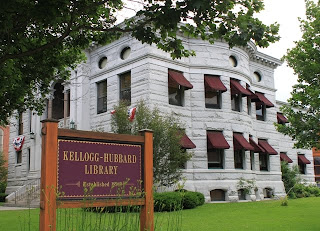





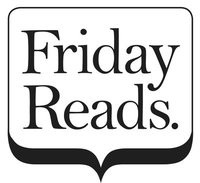


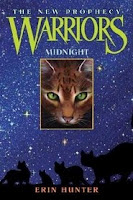




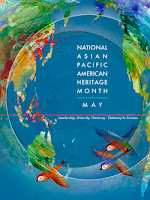

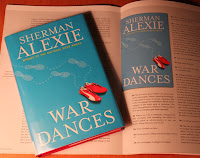







I was already planning to see Midnight in Paris, and now I definitely want to read Vanished Smile -- I love mysteries and Paris, too. Thanks for a great book suggestion!